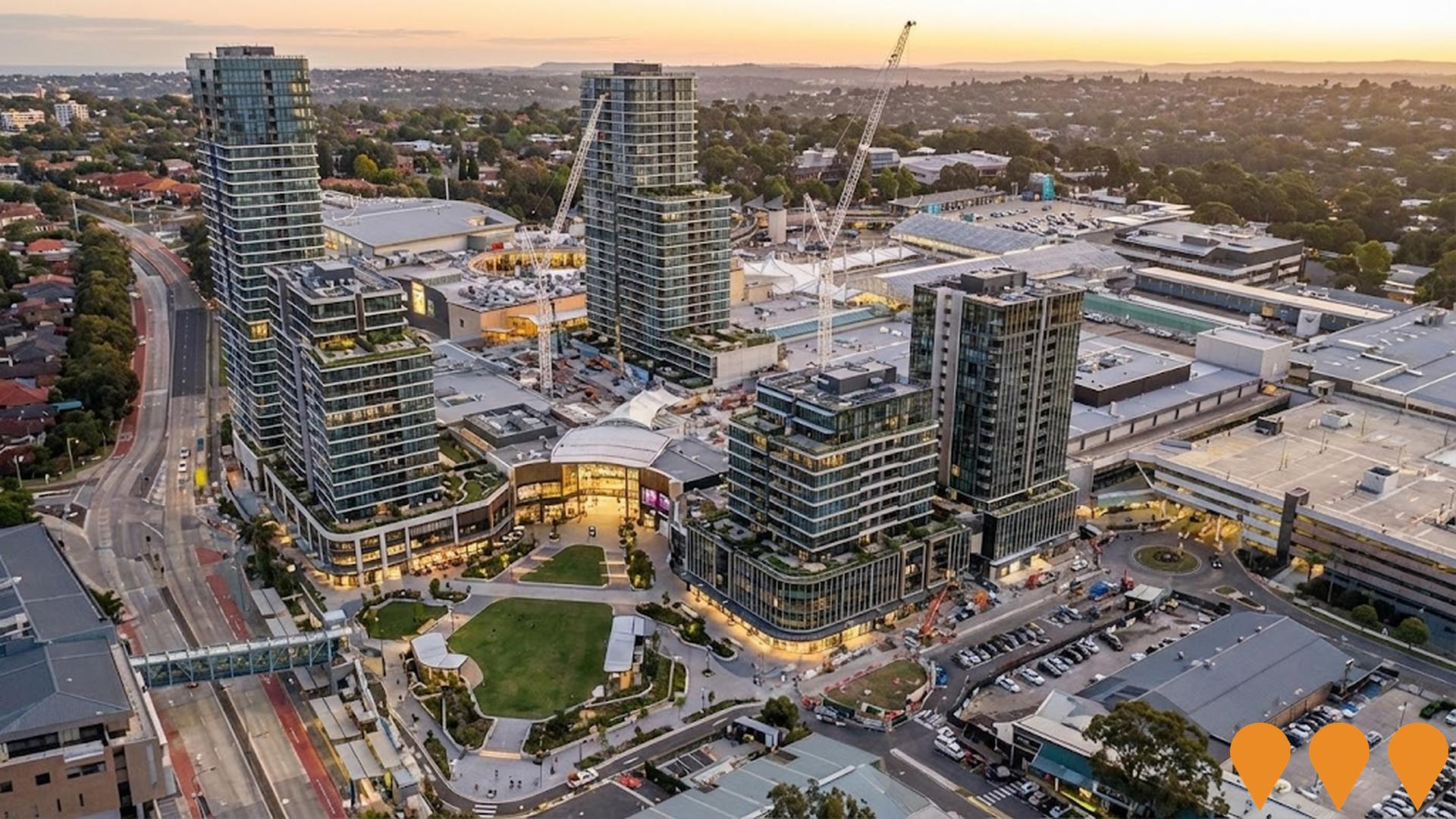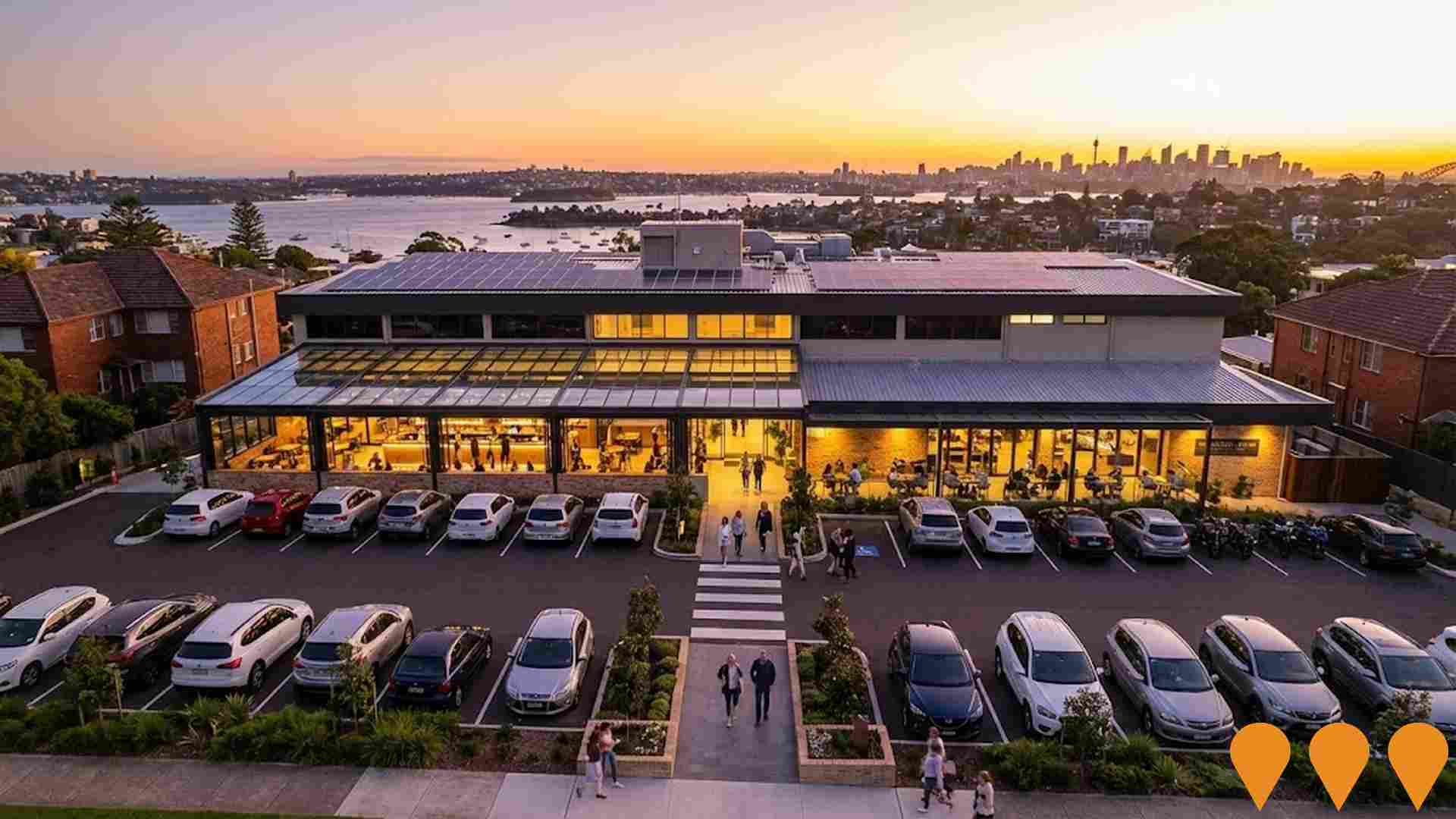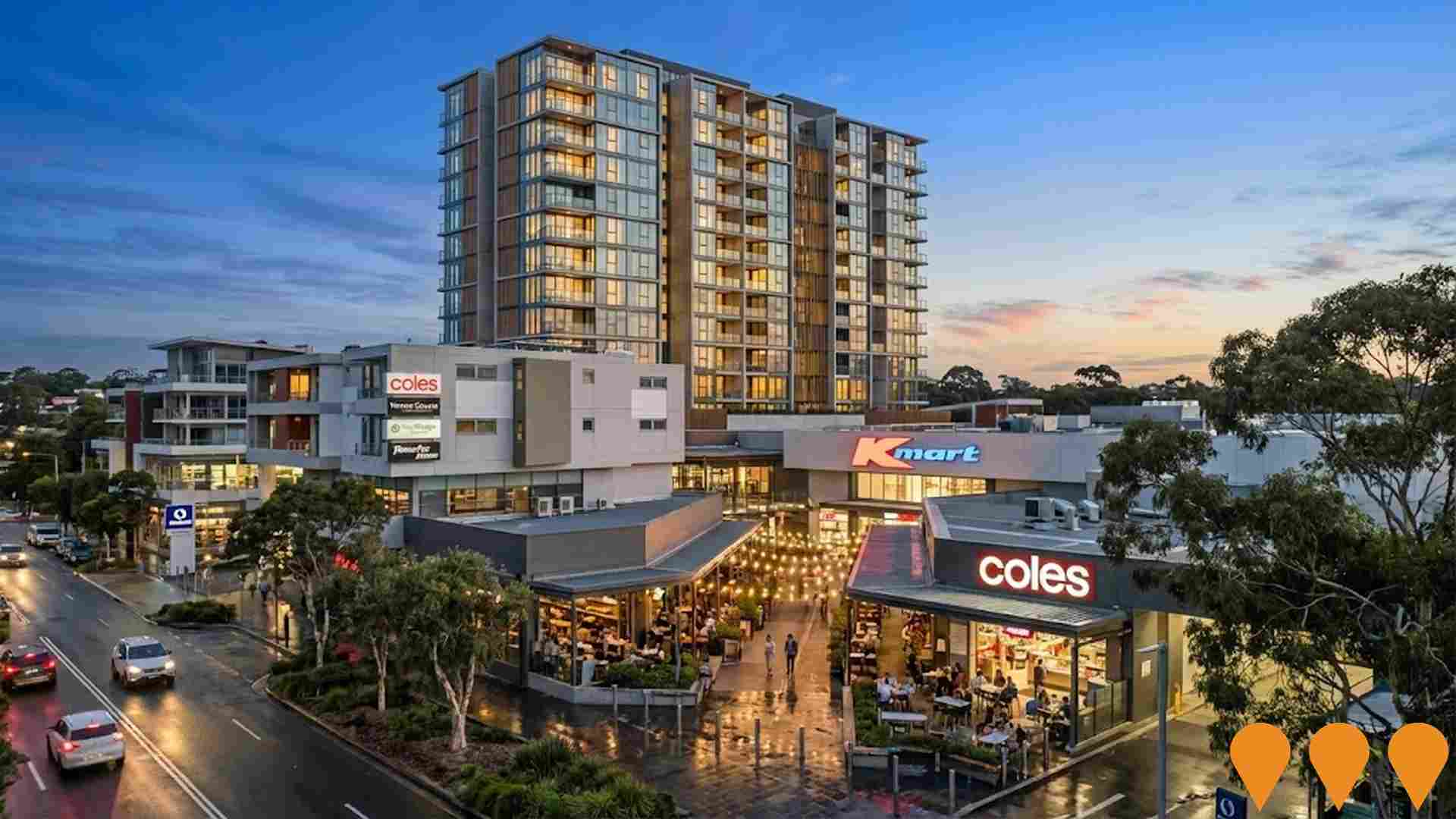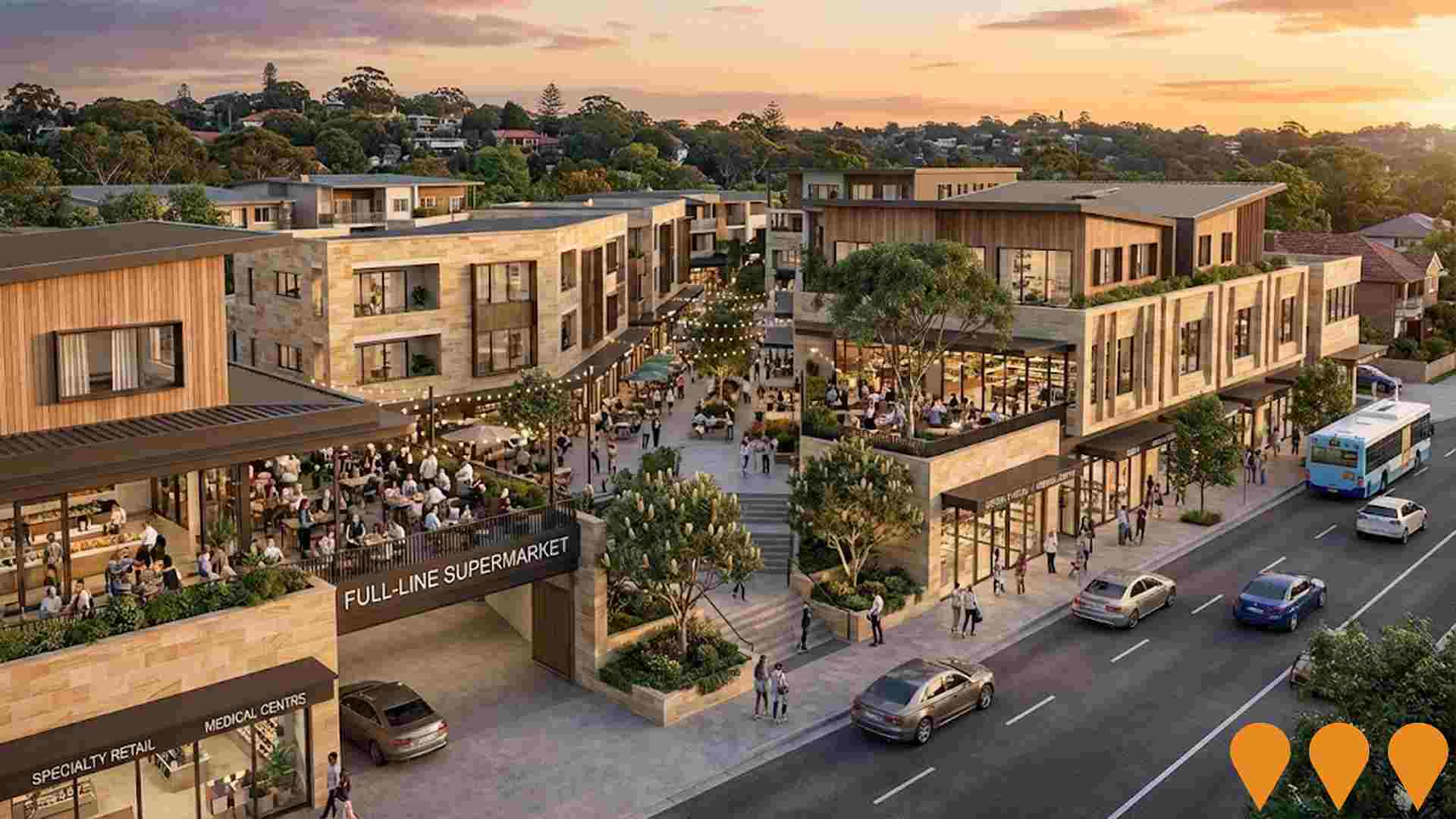Chart Color Schemes
est. as @ -- *
ABS ERP | -- people | --
2021 Census | -- people
Sales Activity
Curious about local property values? Filter the chart to assess the volume and appreciation (including resales) trends and regional comparisons, or scroll to the map below view this information at an individual property level.
Find a Recent Sale
Sales Detail
Population
An assessment of population growth drivers in Balgowlah - Clontarf - Seaforth reveals an overall ranking slightly below national averages considering recent, and medium term trends
Balgowlah-Clontarf-Seaforth's population is 20,908 as of August 2025, an increase of 176 people since the 2021 Census. This reflects a growth rate of 0.8%. The change was inferred from ABS data showing an estimated resident population of 20,897 in June 2024 and 51 new addresses validated since the Census date. This results in a population density ratio of 2,747 persons per square kilometer, placing it in the upper quartile nationally according to AreaSearch's assessment. The area's growth rate is within 2.3 percentage points of its SA4 region (3.1%), indicating competitive growth fundamentals. Overseas migration contributed approximately 77.5% of overall population gains recently.
AreaSearch uses ABS/Geoscience Australia projections for each SA2 area, released in 2024 with a base year of 2022. For areas not covered by this data, NSW State Government's SA2 level projections are used, released in 2022 with a base year of 2021. Growth rates by age group from these aggregations are applied to all areas for years 2032 to 2041. According to these projections, the area's population is expected to decline by 111 persons by 2041, while specific age cohorts like the 85 and over group are projected to grow by 470 people.
Frequently Asked Questions - Population
Development
Residential development activity is lower than average in Balgowlah - Clontarf - Seaforth according to AreaSearch's national comparison of local real estate markets
Balgowlah-Clontarf-Seaforth has recorded approximately 60 residential properties granted approval annually. Over the past five financial years, from FY21 to FY25304 homes were approved, with an additional 14 approved so far in FY26. Despite population decline, development activity has been adequate relative to other areas, benefiting buyers.
The average construction cost value of new homes is $965,000, indicating a focus on the premium market by developers. This financial year, $18.6 million in commercial approvals have been registered, suggesting balanced commercial development activity. Compared to Greater Sydney, Balgowlah-Clontarf-Seaforth shows moderately higher construction activity, with 23.0% above the regional average per person over the five-year period, maintaining good buyer choice while supporting existing property values. However, this activity is lower than the national average, reflecting market maturity and possible development constraints.
Recent construction comprises 51.0% standalone homes and 49.0% attached dwellings, offering a mix of medium-density options across various price brackets. The area has approximately 381 people per dwelling approval, indicating an established location with stable or declining population projections, reducing housing demand pressures and benefiting potential buyers.
Frequently Asked Questions - Development
Infrastructure
Balgowlah - Clontarf - Seaforth has very high levels of nearby infrastructure activity, ranking in the top 20% nationally
Changes to local infrastructure significantly impact an area's performance. AreaSearch identified 15 projects likely affecting the area. Notable ones are: Balgowlah RSL Club Renovations (Stage 1 of Master Plan), Stockland Balgowlah Shopping Centre Expansion & Residential, Totem Road Precinct - Balgowlah Heights, and Seaforth Village Masterplan & Redevelopment. The following list details those most relevant.
Professional plan users can use the search below to filter and access additional projects.
INFRASTRUCTURE SEARCH
 Denotes AI-based impression for illustrative purposes only, not to be taken as definitive under any circumstances. Please follow links and conduct other investigations from the project's source for actual imagery. Developers and project owners wishing us to use original imagery please Contact Us and we will do so.
Denotes AI-based impression for illustrative purposes only, not to be taken as definitive under any circumstances. Please follow links and conduct other investigations from the project's source for actual imagery. Developers and project owners wishing us to use original imagery please Contact Us and we will do so.
Frequently Asked Questions - Infrastructure
Warringah Mall Mixed Use Redevelopment
State significant mixed-use precinct led by Scentre Group to transform Westfield Warringah Mall and adjoining land into eight towers (approx. 12 to 39 storeys) with about 1,500 apartments, new public domain, roads and infrastructure upgrades. Concept proposal includes a Stage 1 detailed application for two mixed-use buildings (around 350 dwellings). Project is currently in the NSW Planning Portal at Prepare EIS stage.

Balgowlah RSL Club Renovations (Stage 1 of Master Plan)
A multi-stage Master Plan to redevelop the Balgowlah RSL Memorial Club site. The current focus (Stage 1) is a $5 million - $10 million refurbishment of the ground floor club areas, including the main lounge, cafe, TAB, and a new indoor/outdoor bar area with an operable glass roof. This stage is scheduled for construction in 2025. The broader Master Plan is an 'evolving strategic priority' to realise the property's value and may include further development of additional operations scheduled for 2027. The initial record mentioned a larger mixed-use redevelopment with 42 residential apartments and a $120 million value, however, the latest club and construction updates focus exclusively on the $5M-$10M club refurbishment as Stage 1.

Stockland Balgowlah Shopping Centre Expansion & Residential
Major expansion and refurbishment of Stockland Balgowlah shopping centre with a new Kmart, upgraded Coles, expanded retail and dining precinct, plus a 14-storey build-to-rent residential tower delivering 183 apartments (including 20 affordable housing units).

Military Road Mega Lot Apartment Development
State Significant Development comprising amalgamation of Honeysuckle Garden nursery and Midas Tyre Auto Service sites into a 3,207sqm mega lot for 107 new apartments up to eight storeys with 3% affordable housing. Declared SSD by NSW Planning Minister on June 12, 2025, bypassing local council approval and being fast-tracked through Housing Delivery Authority assessment within 275 days.

Seaforth Village Masterplan & Redevelopment
A proposed mixed-use village centre redevelopment featuring a new full-line supermarket, specialty retail, dining precinct, medical centre, childcare, and improved public domain with laneways and plazas.

Seaforth Public School Expansion & Modernisation
Major upgrade and expansion of Seaforth Public School including new classroom blocks, hall refurbishment, and improved play spaces as part of the NSW Department of Education capital works program.

Totem Road Precinct - Balgowlah Heights
Boutique collection of 28 luxury townhouses and apartments in Balgowlah Heights by Pallas Group, with completion due mid-2026. The project consists of two separate residential buildings.

The Strand - Balgowlah
Luxury collection of 12 oversized 3- and 4-bedroom apartments with rooftop terraces directly opposite North Harbour Reserve, developed by the Toga Group. The development appears to be in the pre-construction or planning phase.

Employment
The employment environment in Balgowlah - Clontarf - Seaforth shows above-average strength when compared nationally
Balgowlah-Clontarf-Seaforth has a highly educated workforce with notable representation in the technology sector. Its unemployment rate was 3.0% as of June 2025.
At this time, 11,340 residents were employed, with an unemployment rate of 1.2% below Greater Sydney's rate of 4.2%. Workforce participation was higher at 65.4%, compared to Greater Sydney's 60.0%. The dominant employment sectors among residents included professional & technical, finance & insurance, and health care & social assistance. Professional & technical had notable concentration with employment levels at 1.7 times the regional average.
Conversely, health care & social assistance showed lower representation at 11.0% versus the regional average of 14.1%. Over the year to June 2025, labour force levels remained stable while employment declined by 1.2%, leading to a rise in unemployment rate by 1.2 percentage points. In contrast, Greater Sydney experienced employment growth of 2.6% and labour force growth of 2.9%. National employment forecasts from May 2025 suggest potential future demand within Balgowlah-Clontarf-Seaforth. These projections estimate national employment growth of 6.6% over five years and 13.7% over ten years, with varying growth rates across industry sectors. Applying these projections to the local employment mix suggests potential growth of approximately 7.4% over five years and 14.7% over ten years.
Frequently Asked Questions - Employment
Income
The economic profile demonstrates exceptional strength, placing the area among the top 10% nationally based on comprehensive AreaSearch income analysis
AreaSearch's aggregation of ATO data for financial year 2022 shows Balgowlah - Clontarf - Seaforth had a median taxpayer income of $72,636 and an average income of $150,159. Nationally, these figures rank in the top percentile. In Greater Sydney, the median is $56,994 and the average is $80,856. Based on a 12.61% Wage Price Index growth since financial year 2022, estimated incomes as of September 2025 are approximately $81,795 (median) and $169,094 (average). According to the 2021 Census, Balgowlah - Clontarf - Seaforth's household, family, and personal incomes rank between the 94th and 99th percentiles nationally. Income distribution shows 44.7% of residents earning over $4,000 per week, compared to 30.9% in the region who earn between $1,500 and $2,999 weekly. The area's affluence is evident with 55.4% earning over $3,000 weekly, supporting premium retail and services. Housing accounts for 14.9% of income, with residents ranking in the 99th percentile for disposable income. The area's SEIFA income ranking places it in the 10th decile.
Frequently Asked Questions - Income
Housing
Balgowlah - Clontarf - Seaforth displays a diverse mix of dwelling types, with above-average rates of outright home ownership
In Balgowlah-Clontarf-Seaforth, as per the latest Census evaluation, 65.4% of dwellings were houses, with 34.6% being semi-detached, apartments, or other types. This contrasts with Sydney metro's 36.7% houses and 63.3% other dwellings. Home ownership in Balgowlah-Clontarf-Seaforth stood at 39.9%, with mortgaged dwellings at 38.7% and rented ones at 21.4%. The median monthly mortgage repayment was $4,000, higher than Sydney metro's average of $3,800. Median weekly rent in the area was $697, compared to Sydney metro's $720. Nationally, Balgowlah-Clontarf-Seaforth's mortgage repayments were significantly higher at $1,863, and rents substantially above the national average of $375.
Frequently Asked Questions - Housing
Household Composition
Balgowlah - Clontarf - Seaforth features high concentrations of family households, with a higher-than-average median household size
Family households constitute 80.0% of all households, including 45.8% couples with children, 24.8% couples without children, and 8.6% single parent families. Non-family households account for the remaining 20.0%, with lone person households at 17.4% and group households comprising 2.6%. The median household size is 2.9 people, which is larger than the Greater Sydney average of 2.5.
Frequently Asked Questions - Households
Local Schools & Education
Balgowlah - Clontarf - Seaforth demonstrates exceptional educational outcomes, ranking among the top 5% of areas nationally based on AreaSearch's comprehensive analysis of qualification and performance metrics
Balgowlah-Clontarf-Seaforth has a significantly higher educational attainment than national and state averages. 51.9% of residents aged 15+ have university qualifications, compared to 30.4% nationally and 32.2% in NSW. Bachelor degrees are the most common at 35.1%, followed by postgraduate qualifications (13.3%) and graduate diplomas (3.5%). Vocational pathways account for 22.0% of qualifications, with advanced diplomas at 11.2% and certificates at 10.8%.
Educational participation is high, with 33.2% of residents currently enrolled in formal education. This includes 11.3% in primary, 10.4% in secondary, and 6.0% in tertiary education. The area's five schools have a combined enrollment of 3,277 students. They demonstrate high educational performance with an ICSEA score of 1153, indicating they are among the most advantaged nationally. Education provision is balanced with four primary and one secondary school serving distinct age groups. School capacity exceeds residential needs, with 15.7 places per 100 residents compared to the regional average of 12.2, suggesting the area serves as an educational hub for the broader region.
Frequently Asked Questions - Education
Schools Detail
Nearby Services & Amenities
Transport
Transport servicing is high compared to other areas nationally based on assessment of service frequency, route connectivity and accessibility
Balgowlah-Clontarf-Seaforth region has 159 active public transport stops. These are served by buses on 73 different routes, offering a total of 4005 weekly passenger trips. The area's transport accessibility is excellent, with residents averaging 127 meters from the nearest stop.
Services run approximately 572 times daily across all routes, equating to about 25 weekly trips per individual stop.
Frequently Asked Questions - Transport
Transport Stops Detail
Health
Balgowlah - Clontarf - Seaforth's residents boast exceedingly positive health performance metrics with very low prevalence of common health conditions across all age groups
Balgowlah-Clontarf-Seaforth shows excellent health outcomes, with very low prevalence of common health conditions across all ages. Private health cover is exceptionally high at approximately 86% of the total population (17,897 people), compared to the national average of 55.3%.
The most prevalent medical conditions are asthma and arthritis, affecting 6.2% and 5.4% of residents respectively. A large majority, 77.5%, report being free from medical ailments, similar to Greater Sydney's 77.4%. The area has a senior population (aged 65 and over) of 16.6% (3,474 people), with seniors' health outcomes aligning well with the general population's profile.
Frequently Asked Questions - Health
Cultural Diversity
Balgowlah - Clontarf - Seaforth was found to be more culturally diverse than the vast majority of local markets in Australia, upon assessment of a range of language and cultural background related metrics
Balgowlah-Clontarf-Seaforth's population, as of the 2016 Census, had 14.3% speaking a language other than English at home. Overseas-born residents comprised 32.9%. Christianity was the dominant religion with 51.5%.
Judaism, however, showed an overrepresentation at 0.4%, compared to Greater Sydney's 0.4%. Top ancestry groups were English (30.5%), Australian (21.0%), and Irish (9.8%). French, South African, and Welsh ethnicities had notable divergences: French was 1.1% vs regional 1.4%, South African was 1.3% vs 1.1%, and Welsh was 0.9% vs 0.9%.
Frequently Asked Questions - Diversity
Age
Balgowlah - Clontarf - Seaforth hosts an older demographic, ranking in the top quartile nationwide
The median age in Balgowlah-Clontarf-Seaforth is 42 years, which is significantly higher than Greater Sydney's average of 37 years and Australia's average of 38 years. The 45-54 age group constitutes 16.9% of the population, compared to Greater Sydney, while the 25-34 age group makes up only 7.1%. According to post-2021 Census data, the 15 to 24 age group has increased from 12.3% to 14.6%, but the 35 to 44 age group has decreased from 12.7% to 11.2%. By 2041, population forecasts indicate substantial demographic changes. The 85+ age group is expected to grow by 89%, reaching 960 people from 508. Notably, the combined 65+ age groups will account for 98% of total population growth, reflecting the area's aging demographic profile. Conversely, the 25 to 34 and 15 to 24 cohorts are expected to experience population declines.





